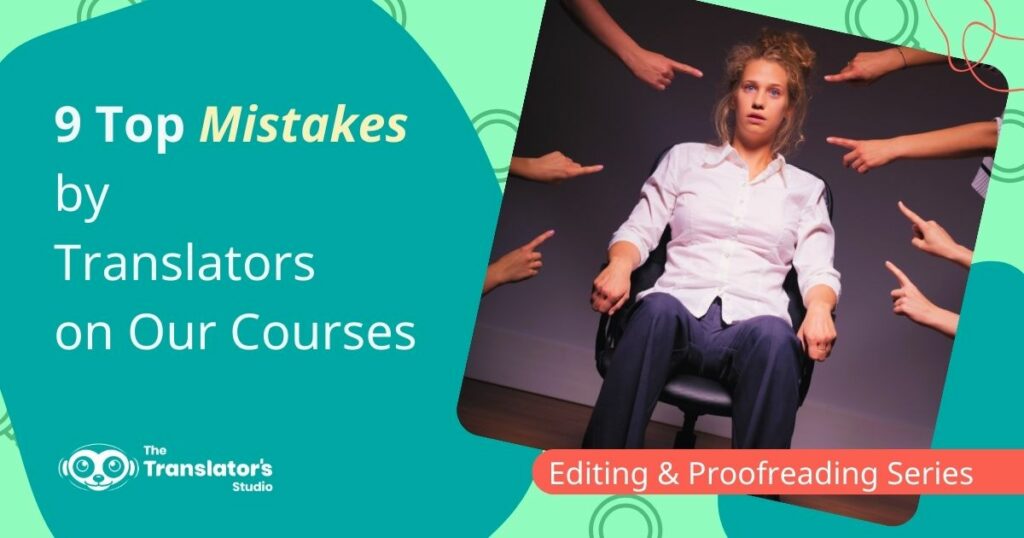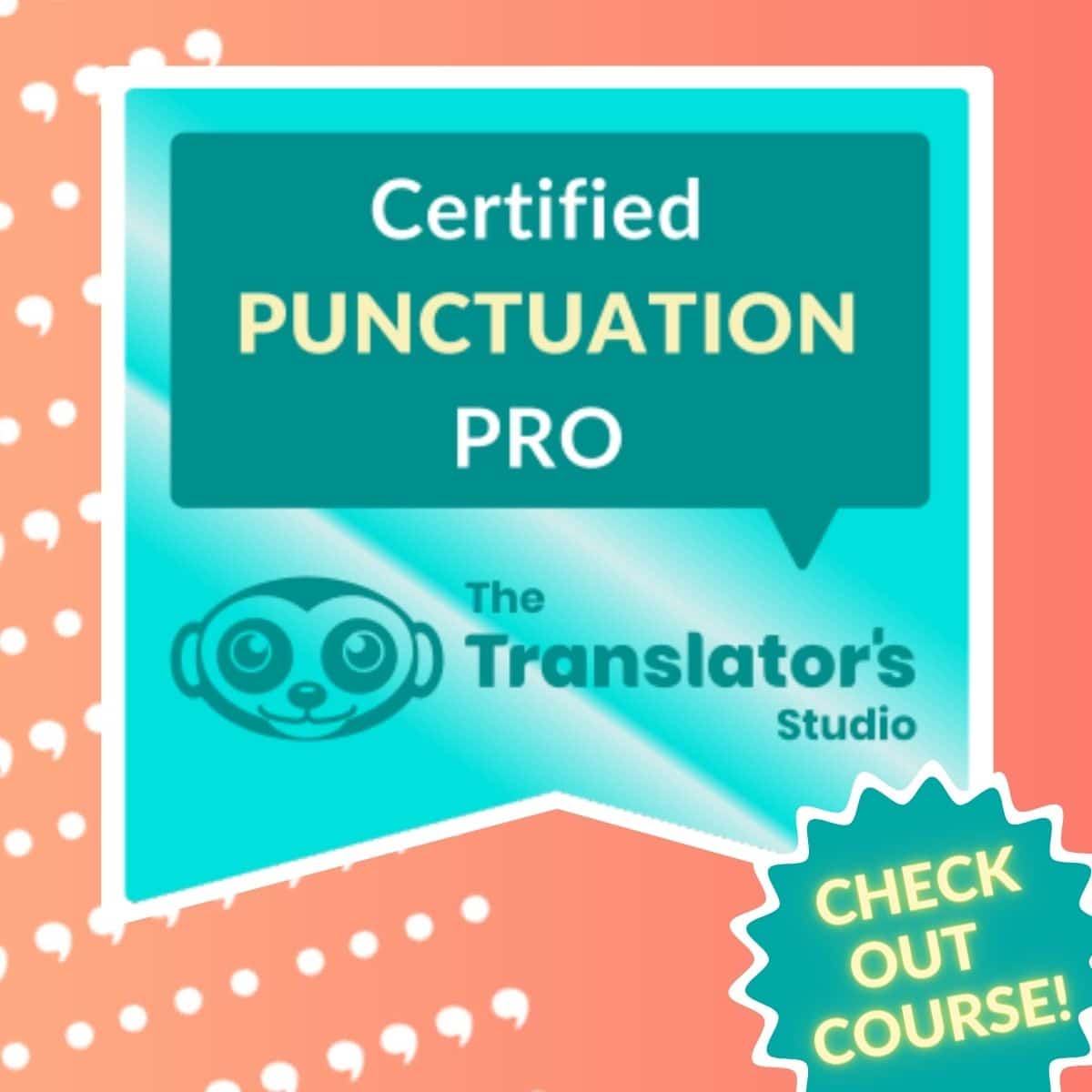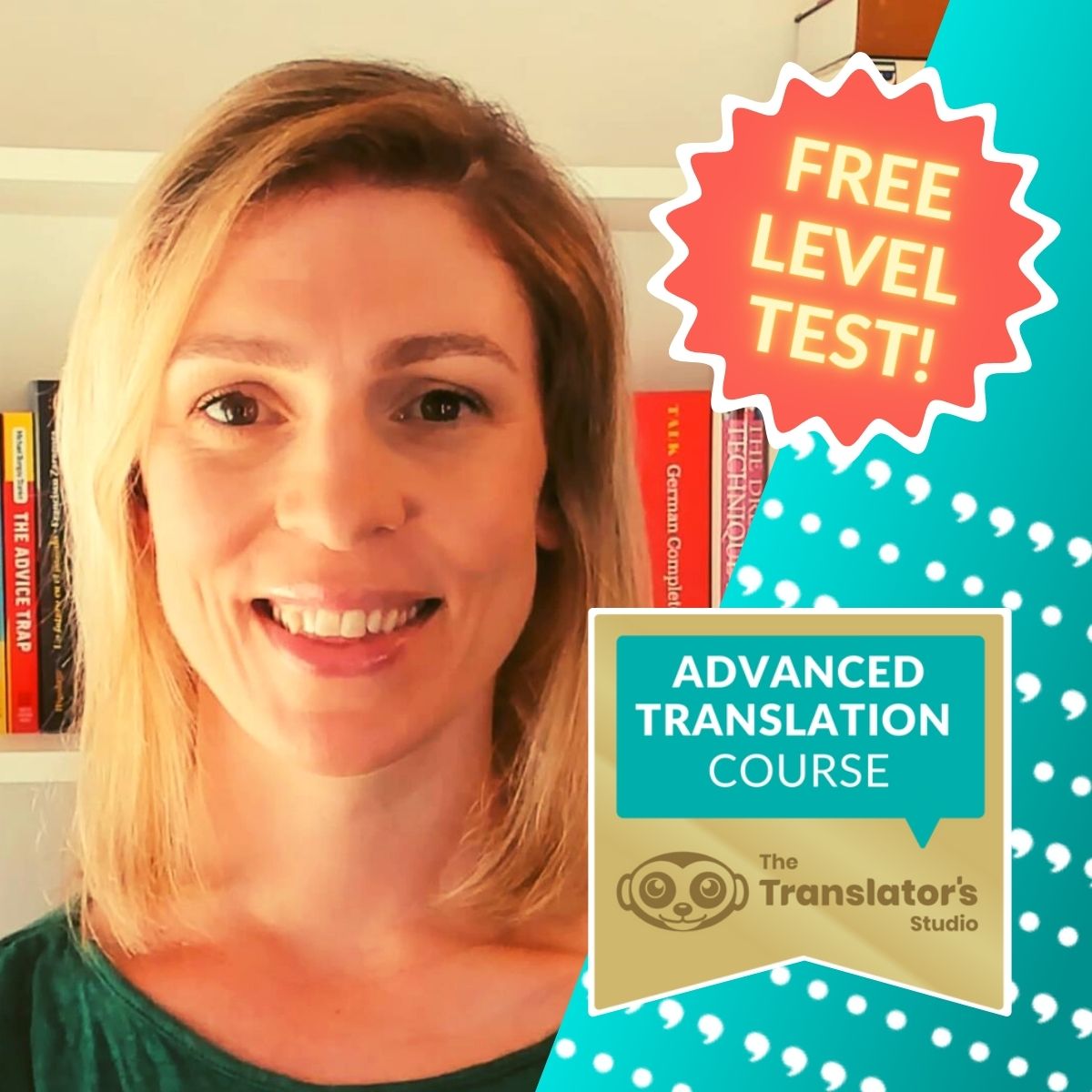After so many years of running our online translation courses to prepare translators to get a regulated qualification through the CertTrans and DipTrans exams, I can tell you that there are some mistakes that professional translators make again and again.
There are lots of possible reasons for these mistakes. They may be down to language skills, language knowledge or the amount of translator training and translation practice the translator has had in their career.
These mistakes could also be caused by a lack of knowledge of translation theory or, of course, a need to hone their professional writing, editing and proofreading skills in the target language.
Sometimes these mistakes are down to translators getting hypnotized by the source text. That’s the main reason behind the mistakes highlighted in this article.
So, here are nine top mistakes made by trainees on our translation courses. Hopefully, learning about these errors here will help you avoid them in your translations.
If you’re a professional translator or a translator in training, how many of these mistakes do you make? Comment at the end.

DISCLOSURE: We sometimes review or link to products and services we think you might find helpful. Wherever possible we use referral links. This means if you click one of the links and make a purchase, we may receive a small commission or other compensation.
1. Odd verb + pronoun choices caused by working in multiple languages
If you’re working as a freelance translator in the language industry, you’re probably acutely aware of non-equivalences between languages. You don’t need translation courses to know that the collocations between verbs and prepositions in one language don’t necessarily map onto a second language.
So, why is it that they make their way through into your final translation?
A good example in Spanish-to-English translation is consistir en. It seems so easy to translate that the translator automatically writes consist in and then focuses their brain on the more challenging parts of the phrase. Of course, the translator got hypnotized and it should be consist of.
So, if you want to learn translation, one point to bear in mind is to remember to check that you’re using the right prepositions with the verbs you choose.
- Become a confident professional translator
- Learn fast with our extremely detailed feedback
- Prepare for the CertTrans exam
- Get your translation certificate
2. Professional translators who overuse the + noun + of
The translators that work with us on our translation courses probably get sick of hearing us bang on about this.
The construction the + noun + of is very common in Latin-based languages like Spanish. You can carry it straight across into English, and it’s not wrong. But it can make the syntax very stiff.
Here’s an example from a business paper from the DipTrans exam: “Acumulación de todo tipo de stocks derivados de la implantación y organización de los procesos industriales”.
Our students often translate this phrase into English as something along the lines of: “Accumulation of all types of stock derived from the implementation and management of industrial processes”.
If you turn that noun phrase into a gerund, the text flows better: “Accumulation of all types of stock derived from implementing and managing industrial processes”.
This is the type of stylistic detail that we include in our extremely detailed feedback in our online courses.
3. Are you a professional translator with a “the” obsession?
If you’re interested enough in languages that you’re still reading this article then you probably already know that languages like Spanish and French use the definite article the much more than English.
Students on our translation courses will often write the more times than they need to.
Apart from being hypnotised by the Spanish, this happens because they’re not proofreading carefully enough. For success in the translation industry, read this article on proofreading mistakes made by trainees on our translation courses for help with proofreading.
Here’s an example from a translation of a general DipTrans paper: “Far from feeding self-esteem, the politicians do not hold back when it comes to tearing their rivals apart.”
I imagine that you can quickly see that this doesn’t look like a professional translation. Remember to check for overuse of the when you’re editing your work.
4. Punctuation skills: putting a comma between subject and verb
I sometimes see source text writers placing a comma between a long subject phrase and its verb. If you observe this, it’s probably an instance of bad drafting by the original writer. If you copy it over into your English translation, you’ll confuse the reader.
Here’s an example of my own making: any CIOL DipTrans candidate who blindly copies Spanish punctuation, is asking for the examiner’s wrath.
Get a certificate in punctuation!
- Learn punctuation fast
- Get confident
- Build up your CV to impress clients
5. Awkward collocations? You need our online translation course
Strange collocations happen when the translator can’t quite put their finger on what they want to say. They place two or more terms together that nearly work, but don’t.
For instance, some examples taken from the literature option in the DipTrans: “Hacía uso de él a mi antojo.” Translated: “I was allowed to use it at my pleasure”. That is a delightful mixture between “at my leisure” and “as I pleased”. It’s also a bad collocation.
Another example, this time from a general paper: “El lenguaje sencillo y directo ha desaparecido,” translated as “simple and direct vocabulary has passed away.” But people pass away, not words.
It may seem obvious, but translators miss this type of error all the time. It can be resolved by the translator looking for this problem at the editing stage. This is because you’re more likely to spot strange collocations when you read your translations as stand-alone texts.
Check out our thesaurus recommendations to help you find the right collocation when you’re offering your translation services to clients.
What we think: If you're a professional translator or writer and want an English language thesaurus packed with words and phrases, this one is the most comprehensive.
6. Translation students sneaking into legalese
We see this problem more on our advanced translation course, particularly in more academic texts such as the DipTrans social science paper.
In the Spanish papers, for example, the original writer has used expressions like dicho (said) or tal such. These sound like legalese when they’re translated directly into English.
For instance: “La ocupación lombarda desmantela dicha organización.” (“Dicha” refers to the Byzantine empire, mentioned in the preceding sentence, not quoted here). Here’s a possible translation: “The Lombard occupation dismantled the said society.” In case like this, that would be a much better translation solution, and make the reader like you better.
7. The freelance translator uses odd possessives
This type of hypnotism is also linked to the the + noun + of construction that I mentioned above.
Here’s a tough example from a general DipTrans exam paper: “Aunque sea a coste de poner el futuro en juego de todos”. It was translated: “Even if means putting the future of everyone at risk”.
Okay, I know what the student translator who wrote this means, but everyone’s future is the usual way of saying it.
8. Translation skills: incorrect use of in-text glosses
In translation theory, a translator uses an in-text gloss when they want to make a small addition to help explain a foreign concept to the new reader. Without this additional information, the reader may not be able to properly understand the text in the way the original reader could
I’ve observed that writers in some foreign languages are using an increasing number of English words in their texts. This is particularly true in texts from the business arena.
Sometimes the words have the same meaning in English and sometimes they’ve developed a new meaning in the language that never existed in English.
You see this sometimes in the DipTrans exam. The source writer uses an English term and then follows it with a translation into the foreign language to explain the term to their reader.
In the translation into English, this becomes redundant because the new target reader, an English speaker, will have understood the term the first time it was mentioned. This means that the into-English translator can leave the gloss out of their translation.
Translation theory is explained in detail in our online courses and through our extremely detailed feedback. Check out our DipTrans course.
- Become a more successful translator
- Learn fast with extremely detailed feedback
- Prepare to pass the CIOL DipTrans exam
- Get your advanced translation certificate
9. Using present simple when present continuous is needed
Spanish writers will sometime use the present simple to express something that is currently happening. An example can be found in the free translation level test that we offer translators who are thinking about doing our translation courses: “La iniciativa parte de la cadena hotelera española NH, que busca a 30 personas realmente estresadas.”
In this example, busca is in the present simple. But it’s taken from a newspaper article that’s reporting on something that’s happening at the time of writing. The English translator would need to express this by using the present continuous.
This type of grammatical inconsistency can trip up translators at all levels. Look out for it when you’re editing your translations.
CertTrans and DipTrans Online Translation Courses
Our extremely detailed personal feedback is the best way for you to hone your translation skills. Whether you’re a beginner looking to release your inner translator or an experienced professional translator wanting to sit the DipTrans, we have you covered.
Join us on our Professional Translation Conversion Course (CertTrans / Pre-DipTrans) or Advanced Translation Course with DipTrans Preparation. Get your free level test now. Feel free to email us directly if you’d like to ask for further information about which online course is most suitable for you.









0 Comments